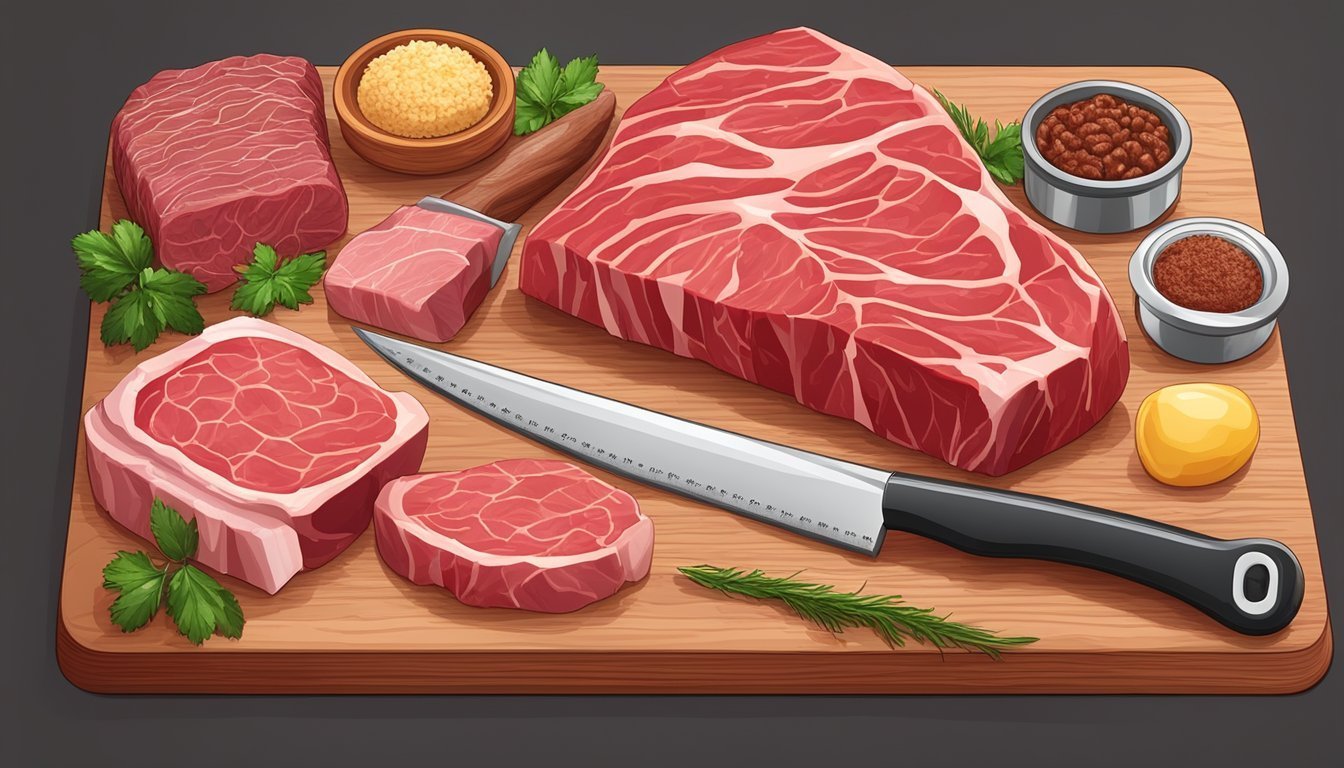The carnivore diet is simple in concept but strategic in execution, emphasizing the consumption of animal products exclusively. With careful selection of meat cuts, this diet provides essential nutrients, rich flavors, and satiating fats, helping individuals thrive on a meat-only plan. Here’s a detailed guide to the best meat cuts for the carnivore diet, along with their nutritional benefits and preparation tips to ensure variety and satisfaction in your meal plans.
Key Cuts of Meat for the Carnivore Diet
1. Beef
- Ribeye: Known for its rich marbling, ribeye is one of the most popular cuts on the carnivore diet. The fat content not only boosts flavor but also provides the high energy density needed for this high-protein diet. Ribeye steaks can be grilled or pan-seared for a juicy, tender finish.
- New York Strip: This cut is slightly leaner than ribeye but still boasts a flavorful marbling. The strip steak is easy to prepare and provides a tender, satisfying experience.
- Filet Mignon: For those seeking a tender, mild-flavored steak, filet mignon is a perfect choice. This cut is incredibly tender, though it’s leaner, so pairing it with a side of fatty cuts can help balance the meal’s macronutrient profile.
2. Pork
- Tenderloin: This is one of the leanest pork cuts, ideal for those looking to add variety without too much additional fat. Pork tenderloin can be grilled, roasted, or pan-seared, often benefiting from a quick sear to lock in moisture.
- Pork Belly: With its high fat content, pork belly is a favorite for those seeking to boost calorie intake and satiation. The crispy texture when roasted or braised adds a delicious dimension to the carnivore diet.
3. Poultry
- Chicken Thighs: Chicken thighs are preferred over chicken breasts due to their higher fat content, which aligns better with carnivore macros. Thighs are versatile and can be grilled, roasted, or pan-fried, delivering a succulent and savory taste.
- Duck Breast: For a gourmet twist, duck breast offers a fatty, flavorful alternative to chicken. Duck is especially high in monounsaturated fats, and the crispy skin makes it a delectable choice.
4. Seafood
- Salmon: Salmon is rich in omega-3 fatty acids and adds a nutrient-dense option to the diet. Grilled or baked salmon provides a tender, buttery texture and supports heart health due to its healthy fat profile.
- Sardines and Mackerel: Small but mighty, sardines and mackerel are packed with omega-3s, calcium, and other essential minerals. Including these fish supports cognitive and cardiovascular health, adding variety to a primarily red-meat diet.
Organ Meats and Nutritional Benefits
Organ meats, often overlooked, are nutrient-dense powerhouses perfect for the carnivore diet. Including organs like liver, heart, and kidneys can ensure you’re getting a broader range of vitamins and minerals.
- Liver: High in vitamin A, iron, and folate, liver is one of the most nutrient-packed foods available. A small amount goes a long way, delivering essential nutrients that support immunity and energy.
- Heart: As a source of CoQ10, a powerful antioxidant, heart meat supports cardiovascular health and offers a unique, slightly gamey flavor.
- Kidneys: Kidneys are rich in B vitamins and selenium, making them valuable for cellular repair and overall metabolic health. Slow-cooking kidneys can yield a tender texture that pairs well with other meats.
Game Meats for Nutritional Variety
Adding game meats introduces new flavors and textures while expanding nutrient diversity.
- Bison: Lower in fat and higher in protein, bison is a lean, nutrient-dense option that offers a richer flavor than beef. Bison is suitable for steaks, burgers, and stews.
- Venison: With its distinct, earthy flavor, venison is ideal for those who prefer a leaner cut. It’s versatile enough to be grilled, roasted, or slow-cooked.
- Elk: Elk meat has a mild taste similar to beef but with a slightly sweeter undertone. It’s ideal for making burgers or steaks and is generally considered a more sustainable choice than conventional beef.
Comparing Grass-Fed vs. Grain-Fed Options
Choosing between grass-fed and grain-fed meats can influence the nutritional profile and flavor of your meals:
- Grass-Fed Beef: Grass-fed options tend to be leaner and richer in omega-3 fatty acids and antioxidants like vitamin E. They’re often chosen for their slightly earthy flavor and nutritional benefits.
- Grain-Fed Beef: Grain-fed beef typically has more marbling, enhancing flavor and tenderness. It can be a preferred choice for those seeking a richer, more indulgent cut, especially for dishes where marbling elevates taste, such as ribeye.
Top 10 Carnivore-Friendly Recipes for Beginners
FAQs on Carnivore Diet Meat Selection
- What is the best meat for a carnivore diet? Ribeye, New York strip, and fatty cuts like pork belly are highly recommended for their balance of protein and fat, supporting energy needs and satiation.
- Can I eat chicken on a carnivore diet? Yes, chicken thighs are preferred for their fat content, which aligns better with carnivore macros. For added variety, consider duck for a fattier poultry option.
- Is organ meat good for a carnivore diet? Yes, organs like liver and heart are nutrient-dense and add essential vitamins, including A and B, which can be harder to obtain from muscle meats alone.
- How to choose between grass-fed and grain-fed meat? Grass-fed meat offers higher omega-3 levels and can be leaner, while grain-fed meat is often juicier due to marbling, depending on your preference for flavor and nutrient profile.
Conclusion
Following a carnivore diet with a diverse range of meat cuts provides essential nutrients, varied flavors, and balanced macros. By incorporating both popular cuts and lesser-known organ meats and game meats, you can create a nutrient-dense diet tailored to your health goals and palate. Emphasizing variety not only keeps your meals interesting but also ensures a comprehensive intake of vital nutrients to support overall well-being on a carnivorous lifestyle.
This guide serves as a foundation for crafting balanced carnivore meals that satisfy both taste and health needs, setting you up for success with this unique diet.


